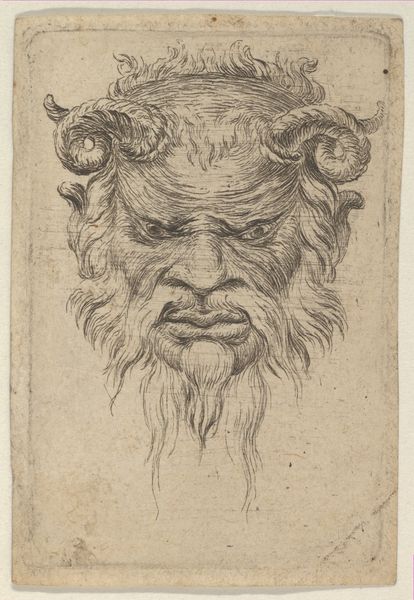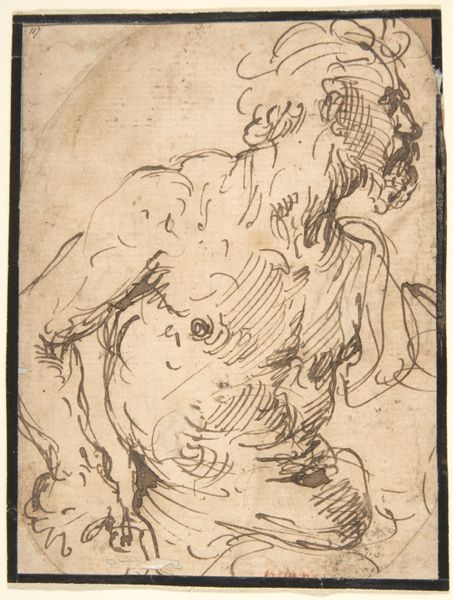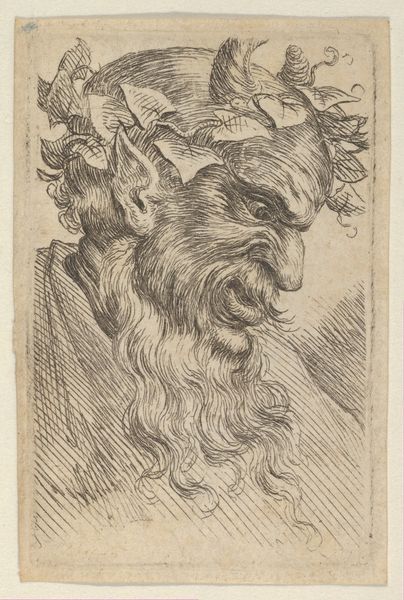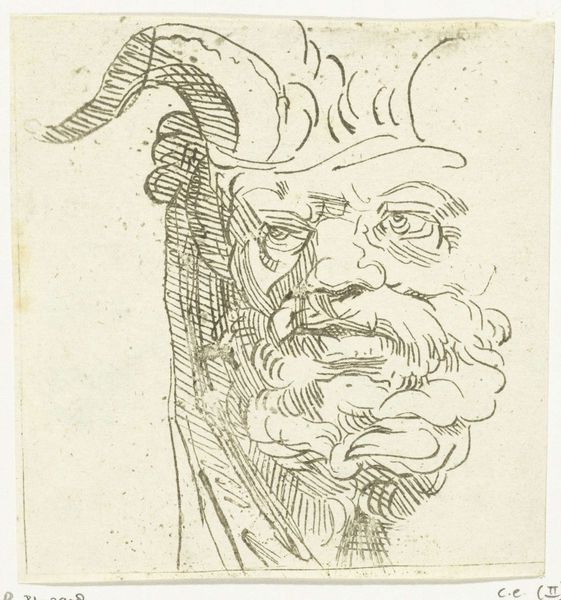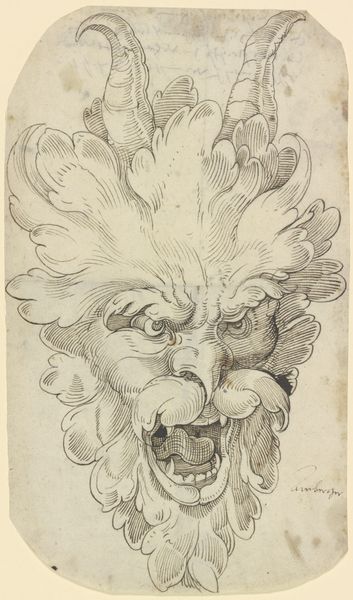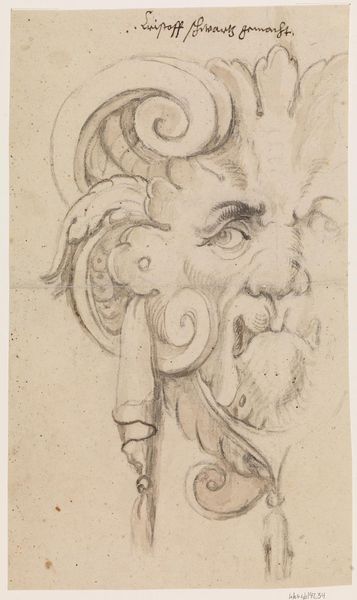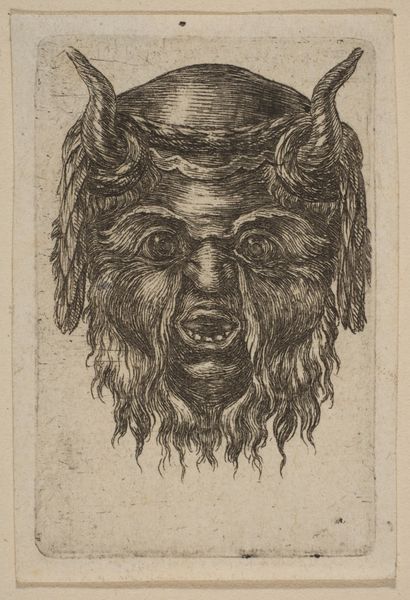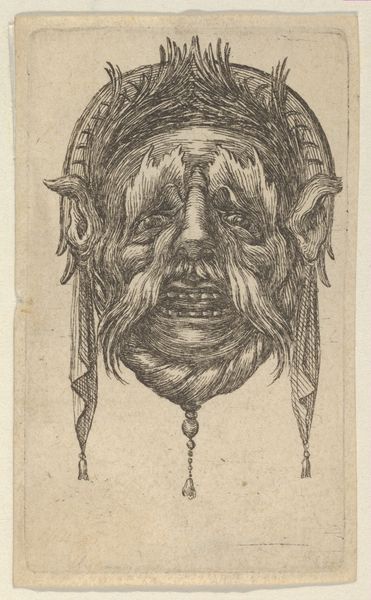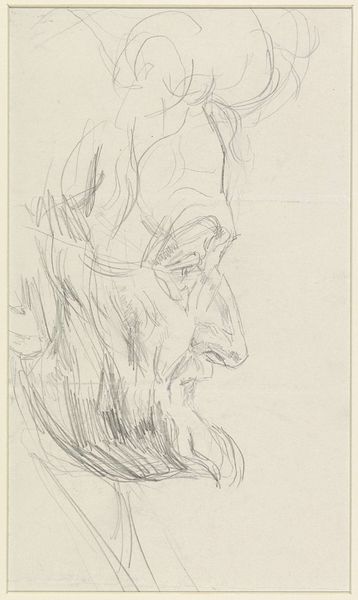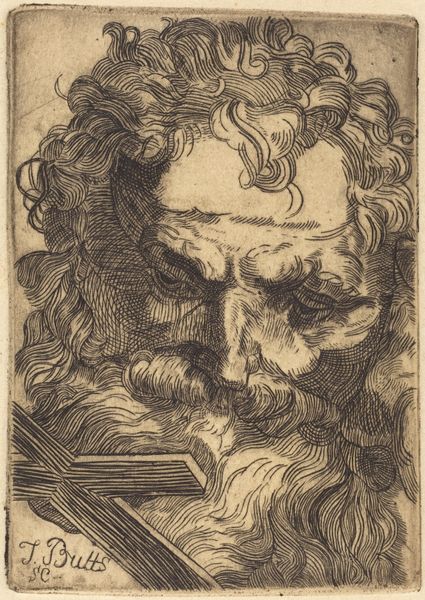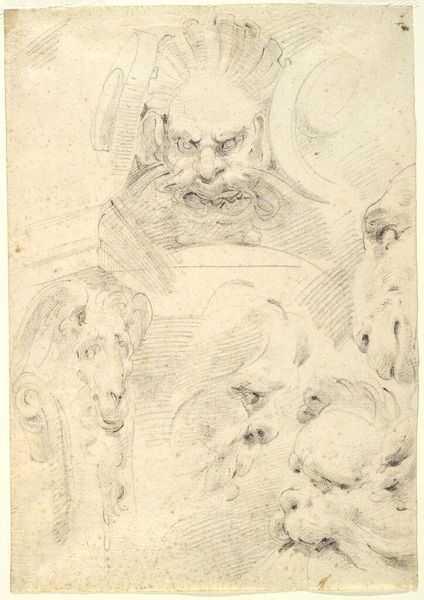
drawing, print, ink
#
portrait
#
drawing
#
ink drawing
# print
#
figuration
#
ink
#
portrait drawing
Copyright: National Gallery of Art: CC0 1.0
Alphonse Legros created this etching, "Head of a Satyr," sometime during his lifetime, from 1837 to 1911. Legros, a French-born artist who later became a British citizen, situated himself within the academic tradition while also engaging with the social realities of his time. This image invites us to consider the satyr, a figure from classical mythology often associated with revelry and hedonism, through a different lens. Legros' satyr appears contemplative, almost melancholic, challenging the traditional representation of unrestrained pleasure. The lines of the etching are delicate, yet they convey a sense of age and weariness in the satyr's face. What does it mean to depict a mythological creature, typically symbolizing freedom and excess, as burdened? Does this portrayal reflect a broader commentary on the human condition, perhaps mirroring the socio-political climate of Legros' era? Consider how Legros uses the etching medium to evoke a sense of introspection. Is he inviting us to reconsider our own desires and societal expectations?
Comments
No comments
Be the first to comment and join the conversation on the ultimate creative platform.
